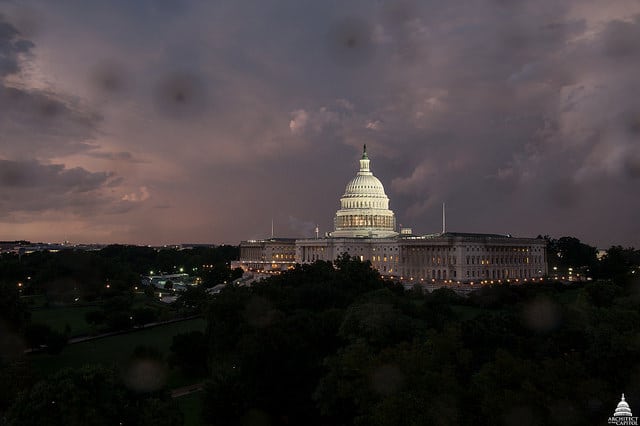
WASHINGTON — The House Appropriations Committee is set to vote early next week on a 2020 budget bill that would increase the National Nuclear Security Administration’s 2020 budget overall, but provide fewer dollars than requested for active nuclear weapons programs.
The House Appropriations energy and water development subcommittee approved the unamended, $46.4 billion Energy and Water appropriations act by voice vote Wednesday, sending it to the full committee for markup and amendments Tuesday.
The subcommittee plans to release a detailed bill report Monday containing its proposed funding levels for individual National Nuclear Security Administration (NNSA) programs. The bill with the NNSA’s budget could reach the House floor by June, Appropriations Committee Chair Nita Lowey (D-N.Y.) told reporters here Wednesday after the subcommittee mark.
Overall, the subcommittee’s bill would increase the NNSA budget by about 4.5% year-over-year to $15.9 billion: some 3.5%, or $600 million, lower than the White House’s total ask for the nuclear security enterprise.
NNSA Weapons Activities, which includes major ongoing refurbishments for four active nuclear warheads, would receive about $11.75 billion: 6% above the 2019 budget, but some 5%, or $650 million, lower than the agency’s 2020 request.
After Wednesday’s markup, subcommittee Chair Marcy Kaptur (D-Ohio) declined to say which proposed NNSA increases she preferred not to fund in the budget year beginning Oct. 1. In her opening statement, Kaptur said the bill would not fund “costly, poorly defined recommendations from the President’s [2018] Nuclear Posture Review.”
Among other things, the Donald Trump administration’s Nuclear Posture Review called for: a low-yield, submarine-launched ballistic-missile warhead; studying the viability of a new low-yield, sea-launched cruise missile; and maintaining, rather than retiring, the megaton-class B83 nuclear gravity bomb.
Last year, before the GOP lost control of the House, Congress funded the low-yield ballistic missile warhead to the tune of $65 million for 2019. The NNSA plans to ship the first of these W76-2 warheads — modified version of the existing high-yield W76-1 — to the Navy by Sept. 30. The NNSA produced the first W76-2 in January and plans to make only a “small number” of them, the agency has said.
On the other hand, Congress has yet to fund the sea-launched cruise missile study or B83 sustainment. The NNSA sought funding for both for the 2020 fiscal year. The missile study is part of a roughly $5.5-million increase sought within the maintenance account for the W80 warhead: the same weapon the NNSA is modernizing for the Air Force’s next air-launched cruise missile. For B83 sustainment, the agency seeks just over $50 million, or 16.5% more than the bomb’s 2019 maintenance budget.
But neither of those programs come close to the largest increase the agency wants for fiscal 2020. That distinction goes to the W80-4 life extension program that will prepare the W80 to fly aboard the Long-Range Standoff weapon cruise-missile the Air Force plans to deploy beginning in 2025.
The NNSA wants about $900 million next year for W80-4, which is slated to churn out its first refurbished warhead in 2025. The 2020 request is 35% more than the 2019 enacted level and 25% more than the NNSA once thought W80-4 would require this year. NNSA estimated W80-4 could cost up to $10 billion to complete by 2032. The Air Force has said it wants to buy about 1,000 Long-Range Standoff weapon missiles.
Another big ticket ask for 2020 is the $410 million the NNSA requested to begin development of a plutonium pit-production plant at the Savannah River Site in Aiken, S.C. A committee aide called that “a huge number. Doesn’t mean it’s not needed, but there’s only so much money to go around.”
The South Carolina pit factory, to be built on the remains of the canceled Mixed Oxide Fuel Fabrication Facility (MFFF) plutonium disposal plant, would produce 50 nuclear-weapon cores a year by 2030. The Los Alamos National Laboratory in New Mexico would produce another 30 cores annually by 2026, with production beginning at 10 per year in 2024, according to current NNSA plans. The cores could be used in future silo-launched intercontinental ballistic-missile warheads.
Lawmakers in both chambers and both sides of the aisle have blanched at an NNSA-chartered estimate from 2018 that said it will cost about $15 billion over several decades to make pits this way.
Meanwhile, the subcommittee’s bill would also fund the Surplus Plutonium Disposition project NNSA has cooked up to eliminate the 34 metric tons of surplus weapon-usable plutonium that MFFF was once supposed to process. Kaptur did not say how much funding Surplus Plutonium Disposition would receive in 2020; the White House sought about $80 million for the project.
Also under Kaptur’s bill, the NNSA’s Defense Nuclear Nonproliferation account would get about $2 billion in 2020, up about 7% from 2019 and 4% more than requested.
Naval Reactors, which builds power components for the Navy’s warships and submarines, would receive about what the White House sought: $1.6 billion. That is down some 9% compared with 2019 as the agency finishes development of the nuclear reactor to power future Columbia-class submarines.